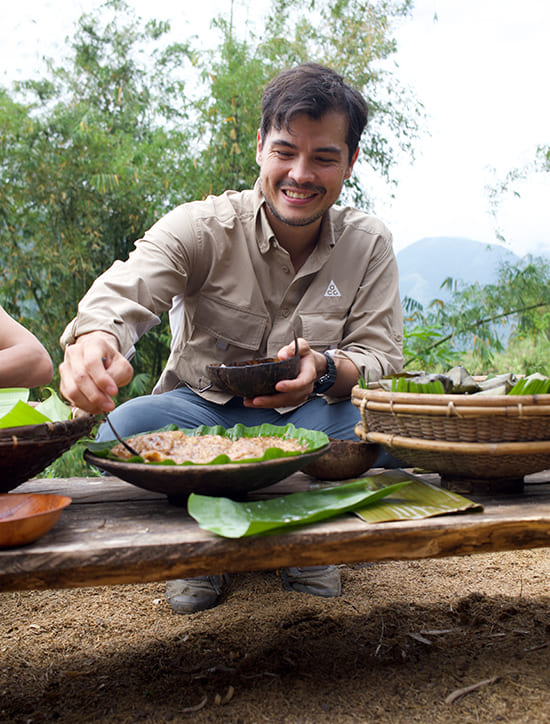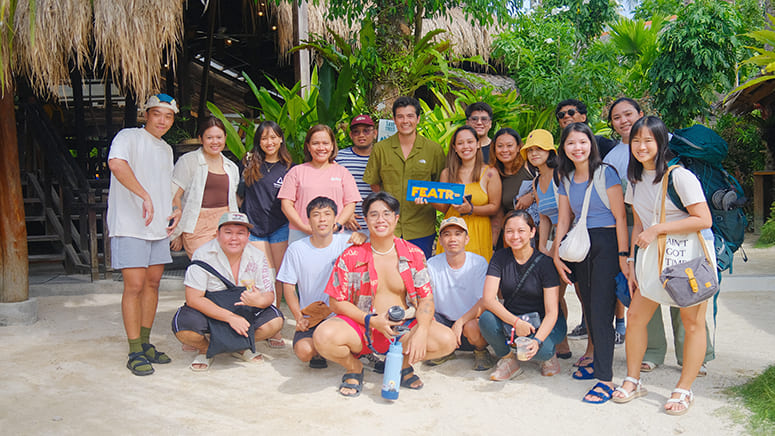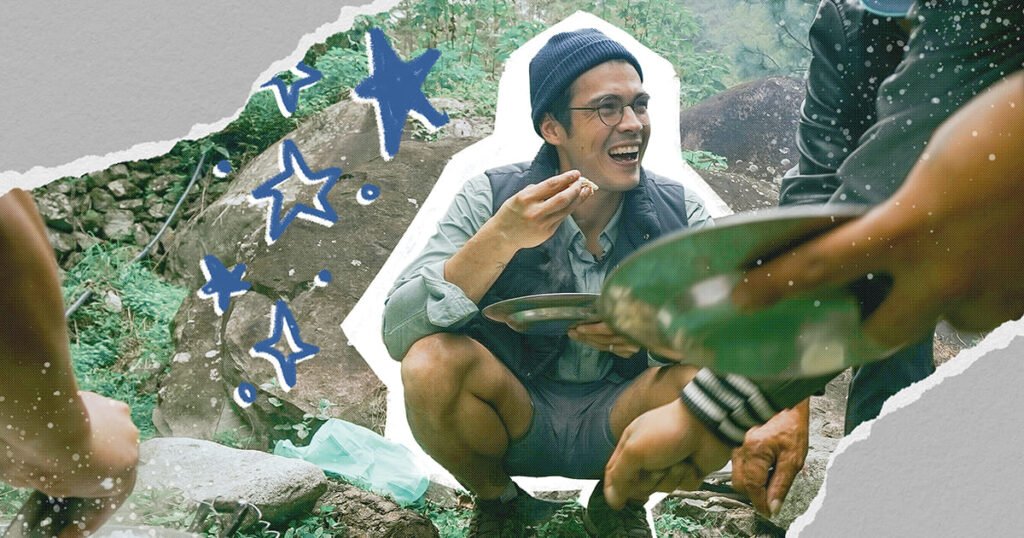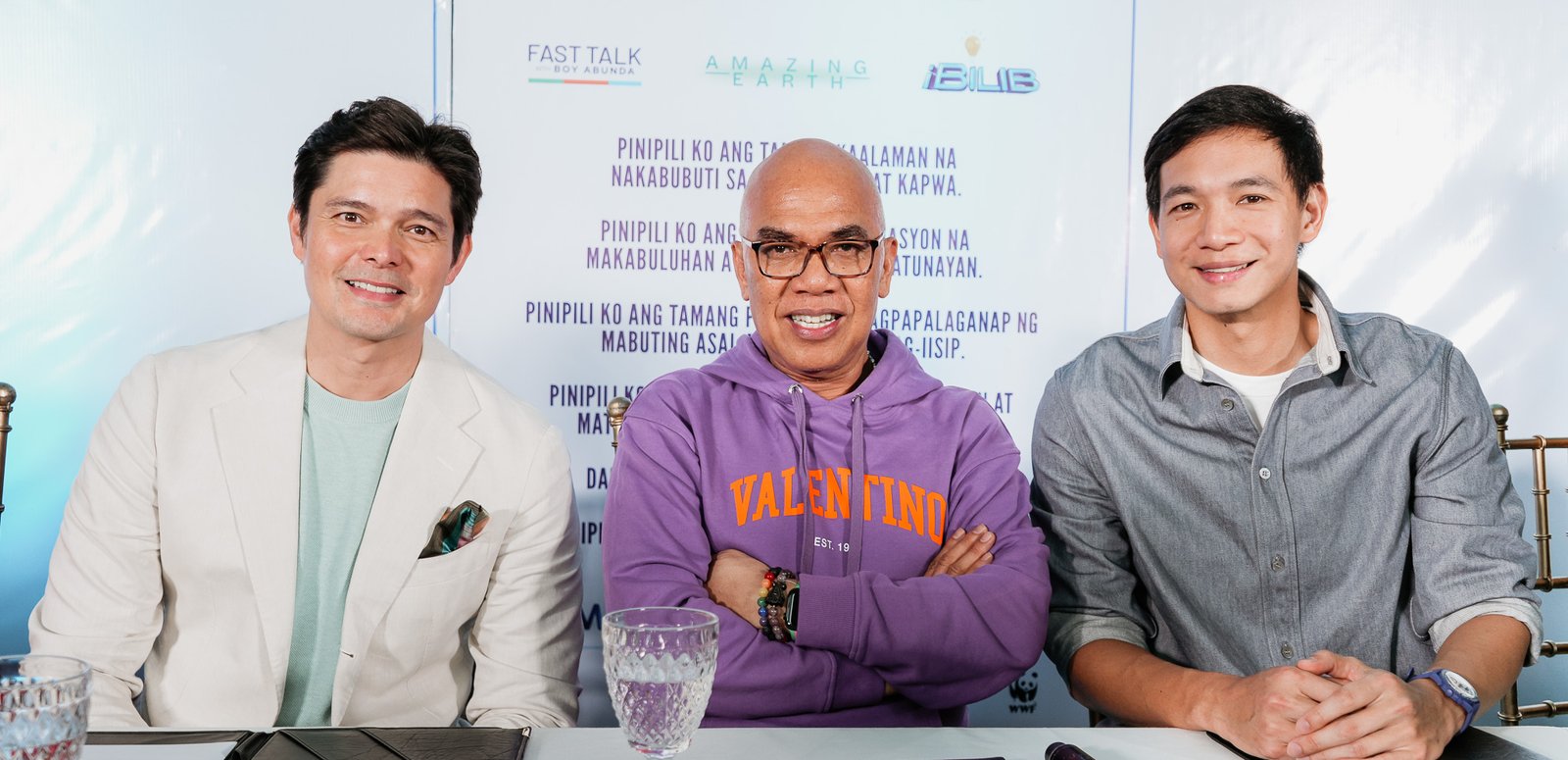When Erwan Heussaff transitioned his food-focused YouTube channel into the media company FEATR, it came from a vision that the stories of our cuisines and culture deserve to be truly understood by more Filipinos.
“The whole idea was to make people understand that there’s no one way to make Filipino food,” says Erwan. “It was important for us to be able to do that right.”
By traveling to local kitchens, salt flats, coastal drying stations, and small islands, FEATR invites people to see Filipino food in its fuller, more nuanced context. “I always say Filipino food runs the spectrum—from karinderyas, to Jollibee, to the toyo restaurants, all of that is Filipino food, and it’s all different facets and variations of it.”
That same philosophy applies to our food in the regions. Erwan emphasizes that Filipino food is hyperlocal, just as it is hyperseasonal. “Because we all live in regional silos, we all think we’re experts until you’re confronted with another culture from a different island.” A Manileño’s memory of sinigang can be largely different from a person who lived in Iloilo, whose sinigang’s pampaasim is made out of batuan. These regional variations are inevitable outcomes for a country made up of over 7,000 islands.
Often, the discourse still centers on which dishes are better tasting, but FEATR wants to move away from the comparisons. Instead, they spotlight each dish as it is: rooted in its region and shaped by its people. Their documentaries have become an avenue for artisans and producers to receive the visibility they have long deserved.
“It enriches the storytelling of our food if we were more specific with Filipino ingredients. If I tell you that this particular ube is kinampay, only grown in Bohol (for) two months in the year by this particular tribe, all of a sudden you go from a commodity product into this high-end product that uplifts the farmers and our local biodiversity.”
The quiet power of their storytelling
Shortly after the release of FEATR’s Salt Series, a documentary about the nearly forgotten Asin Tibuok, which unfolded into an exploration of Filipino salt-making, local salt producers found renewed purpose in their craft, as the series helped preserve and sustain their life’s work.

“As we started doing the salt documentaries, we realized people wanted to buy the salts. (In) one community in Guimaras (known) for their Tultul salt, (there used to be just) two families left making it, and today, the whole community makes it. This girl in Iloilo makes Budbud or the salt Miagao, and now she has a whole contingent of the women in Miagao who are making the salt.”
Beyond cultural preservation, FEATR’s work also puts to the surface an often-overlooked issue affecting agriculture and biodiversity. It’s apparent there’s a multi-layered depth in what this media company has uncovered.
Above all, FEATR helps communities be reminded of the value of their traditions. “We ensure there is deep respect for the subject’s intelligence, whether they are aware of it or not, and try to convince them that what they do is more important than what they think,” Erwan shares. It’s this humility that’s been shaping their approach to storytelling.
Cultural stories that begin with listening

“I’ve learned that the most powerful stories aren’t always the loudest; they’re the most honest. We stopped focusing on trying to impress and started focusing on how to connect,” Erwan says.
The team believes that the way to promote our country and our cuisine is through our deep understanding of it, before we can present ourselves internationally.
While much of the food media today chases after presentation and virality, FEATR takes on a quieter and thoughtful route. “I’ve also learned to trust silence, to leave room for interpretation, and to show instead of tell,” he adds.
This also filters into their decision-making. “We try to focus on where we can have the most impact. Does it have an impact on producers, the artists themselves? Does it have an impact on the families that are involved? In cultural preservation for an art that’s being left behind? We really look at that scale.”
From cultural memory to global conversations
From helping Filipinos rediscover their food in its regional forms and hyper-specific contexts, FEATR is now turning into a window for others to see what the country has to offer.
Now in its fourth year, FEATR has achieved what it set out to do. They are proof of how promoting food through content plays a part in our gastrodiplomacy, but Erwan quickly notes that their efforts, including all other food creators, would only be sustainable if supplemented by actual policy. The government should put the right systems and promotions in place to protect our local artisans and producers.
“Food is such an important part of why people travel, or why people talk about a country. So we want to be in those conversations,” Erwan shares.
When asked which dish he’d choose for the Philippines to be represented as, he chose adobo. “It’s accessible. Anyone can make it.” But more than that, this dish is an affirmation that Filipino food doesn’t have to be one thing. It can be salty, sweet, vinegary, brown, white, or red—and still be true.











